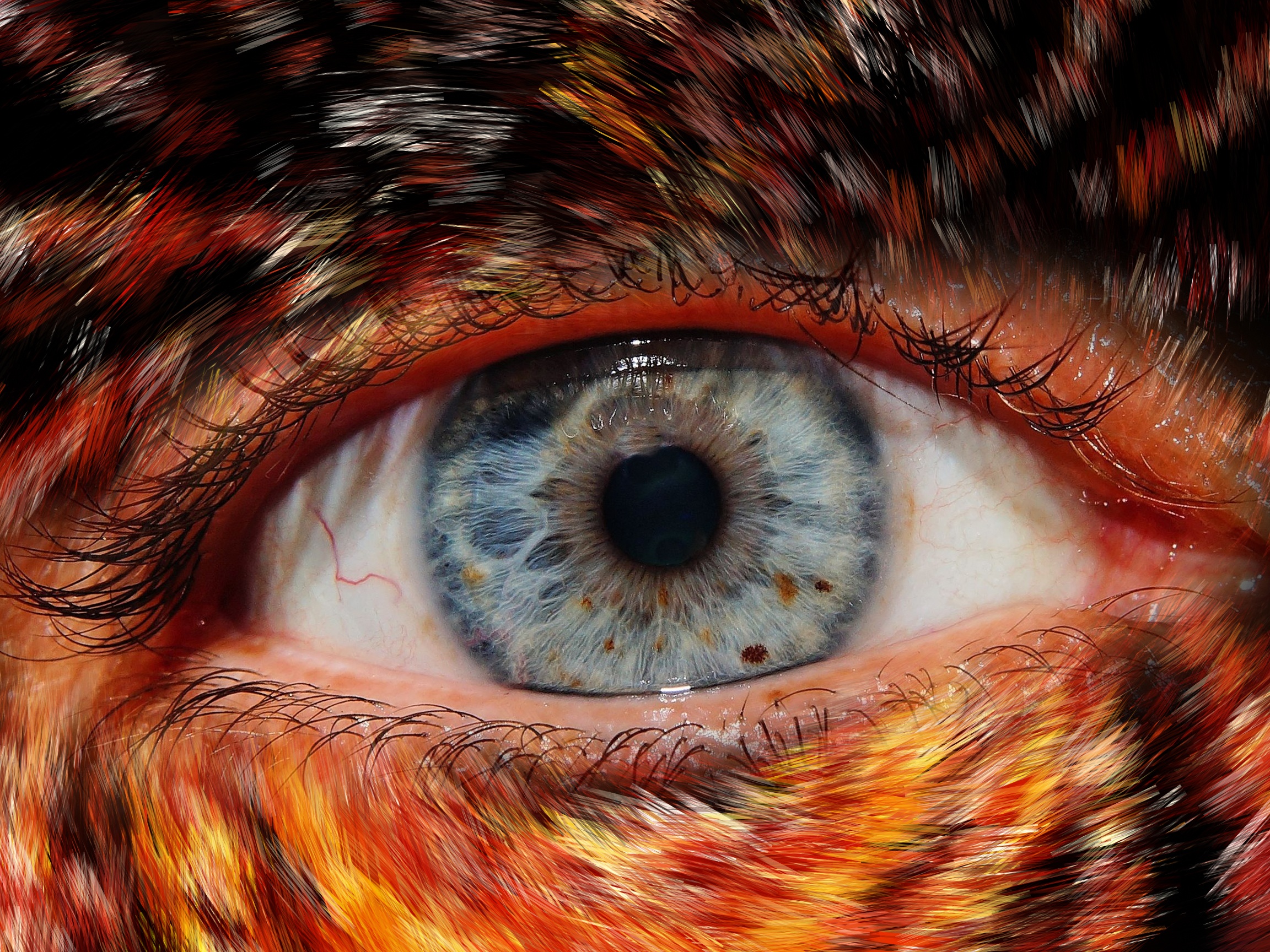
Arts & Culture
Why boys are blue and girls are pink

Only humans obviously show the whites of their eyes, making it easier to communicate and deceive at a glance
Published 21 October 2016
You know things are getting serious when a poker player slides sunglasses on to stop their eyes giving the game away.
But if you were playing a gorilla or a dog, the animal may not need sunglasses since their eyes are much harder to read, because you can’t see the whites of their eyes.
Humans are the only animals with obviously visible eye whites, with irises that are much more prominent and therefore readable.
We can easily tell where someone is looking and often what someone is thinking. But in many animals the whites of the eye, known as the sclera, aren’t white at all but are pigmented, making the iris hard to distinguish. And in those animals that do have white sclera, it is rarely visible.

Humans don’t have pigmented sclera, suggesting that conspicuous irises that contrast against the rest of the face might be important. One reason may be that in humans the eyes aren’t just for seeing, but for communication.
“Primates have pigmented sclera, so there’s barely any contrast between the iris and surrounding face, and although dogs have white sclera it’s not visible most of the time,” says evolutionary biologist at the University of Melbourne’s School of BioSciences Professor Mark Elgar.
“One feature of unpigmented sclera is that it can reveal a person’s health, so we can, perhaps unconsciously, gauge age and attractiveness from the colour of someone’s sclera,” says Prof Elgar.
Red or pink sclera can be associated with poor health, while yellowing sclera can be a sign of jaundice or old age, Professor Elgar explains.
“This is little source of comfort to those wishing to conceal such attributes!”

Conspicuous irises can also show what someone is looking at. This is useful because it’s likely that what’s got their attention might be of interest to us too. Being able to infer that someone might have noticed something we haven’t, or simply understand that others might have a different perspective from us, is known as Theory of Mind.
This ability to understand another’s perspective is not often seen in animals, but that’s not to say it doesn’t exist. Certain species like chimpanzees have better such capabilities than other animals, but compared to humans is still very limited. Head of Psychological Sciences at the University of Melbourne, Professor Nick Haslam, says that most humans are able to do this effortlessly. Those that are not so good at it include people with some form of autism.
Interestingly, Professor Haslam says that children with autism aren’t as interested in stuffed toys with visible eye whites when compared to other children and adults. “It’s not surprising perhaps that people who are less adept at social perception and are less attentive of other people’s gaze don’t care much for eye whites,” he says.
“We are forever ‘mind-reading’ what others are thinking, and using that as a basis for how we interact with them, whether it be to cooperate with them through a shared understanding or to compete with them by manipulating or deceiving them.”

The ability to fool one another depends on someone having a Theory of Mind, says Professor Haslam. In some situations it might be preferable that someone doesn’t share the same mental state as you. Perhaps you’ve noticed something that they haven’t and you want to keep it that way to avoid unnecessary competition.
Poker players deliberately try to manipulate their opponent’s mental state to their advantage. On a simple level, averting their gaze or feigning interest in something could be potential strategies to deceive.
The flipside to deceiving someone with eye gaze is that we can also use eyes to read emotional states. Having prominent irises can help amplify some emotional expressions so that they’re easier to convey and detect says Professor Haslam. It can help us gauge how sincere someone is. This is where poker sunglasses come in — they can impair the sending and receiving of social signal.

Arts & Culture
Why boys are blue and girls are pink
In this context, there’s a clear drawback for the player being read by those around them.
To date, there hasn’t been much study on the benefits to the signaler in giving away what they’re thinking, but Professor Haslam believes “it is plausible that having visible sclera assists with sending, as well as receiving, social messages, thus helping people to coordinate shared activities and to make their intentions and dealings known.”
While there may appear to be a disadvantage in that the whites of our eyes make it easier for other to ‘read’ us, there must be an overall advantage in having visible eye whites for social communication.
“Perhaps humans evolved visible sclera because our much more developed Theory of Mind makes conveying and reading others’ gaze direction and emotional expressions much more important for our social intelligence.”
Banner Image: Pixabay